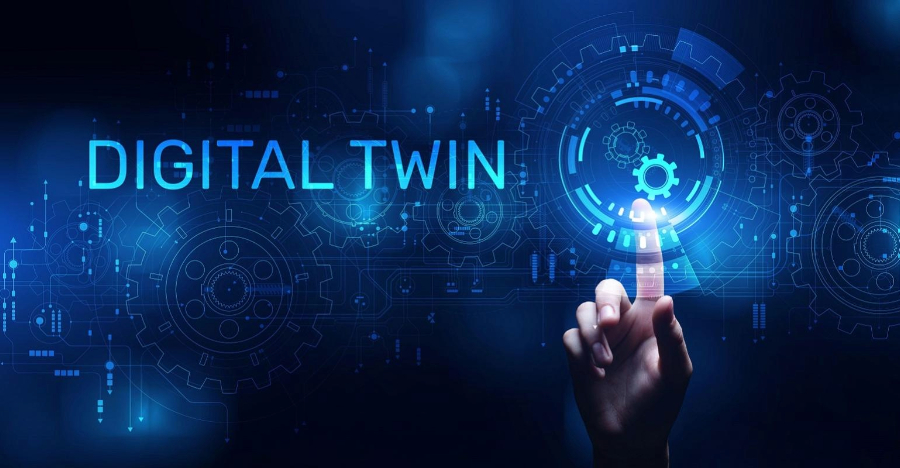Digital Twin Technology
Digital twin technology is a relatively new innovation that is being applied in the manufacturing industry. Various types of digital twins can be distinguished based on the connection and data flow between the physical object and its digital counterpart. This research aims to describe the key features of this emerging technology and highlight the novel applications arising from the corporate digital transformation processes within the manufacturing sector.
Digital transformation in the corporate world has opened up new possibilities for the utilization of digital twin technology. External data sources, such as social media, can also be integrated into the creation and development of digital twins as part of the corporate digital transformation process.
Digital twin technology creates virtual models of physical systems or processes, and its popularity is expected to continue growing in 2023. Digital twins are digital representations of physical objects, systems, or processes that can be employed for simulation, analysis, and optimization. They are created by collecting data from sensors and other sources and using it to generate a virtual model of the object or system being represented.
The growth of digital twins is driven by advances in technology, the expansion of the Internet of Things, and the increasing demand for data-driven decision-making. They are likely to continue evolving and becoming more sophisticated, offering a broader range of applications and capabilities. It is also possible that digital twins will become more integrated with other technologies like AI and ML to enhance their capabilities
Types of Digital Twins
Virtual models are divided into three categories depending on what they simulate
Product Twins: These simulate individual objects. For example, manufacturers use a virtual prototype of a specific product before setting up a production line to analyze how it will perform under various conditions and identify potential issues. This allows them to make necessary adjustments and create a more efficient design for their goods. Subsequently, product twins can be employed to monitor product performance in the physical world.
Process Twins: These are responsible for simulating processes, such as manufacturing processes. In a virtual environment, various scenarios of a production process can be created to assess outcomes in different situations. This enables companies to develop the most efficient production methodologies. The process can be further optimized using product twins that correspond with each piece of equipment involved. This helps companies perform preventative maintenance, reducing costly downtimes and making manufacturing operations safer, faster, and more efficient.
System Twins: These are replicas of entire systems, such as a factory. They collect vast amounts of operational data generated by devices and products within the system, extract insights, and open up new opportunities for optimizing all processes while ensuring the system’s integrity.
Why Is Digital Twin Technology Important?
Digital twin technology employs visualization techniques to enable users to inspect the inner workings of physical objects or processes without the need for physical access, thus mitigating health and safety risks. Furthermore, digital twins offer substantial time and cost savings in the design, testing, implementation, and modification of products and systems.
Challenges that Digital Twins Help Solve
The primary challenge that digital twins assist in addressing is the early detection of issues before they occur. Digital twins serve this function across various industries. For instance, virtual models outperform human workers in diagnosing equipment malfunctions, as they continuously collect real-time data from sensors about the condition of spare parts. This enables maintenance specialists to replace or repair components before significant damage occurs.
The growth of digital twin technology has had a significant impact on businesses worldwide, enhancing efficiency, cutting costs, and enabling better decision-making. In the manufacturing industry, for example, digital twins optimize production processes, anticipate potential issues before they arise, and enhance product quality. In the transportation sector, digital twins monitor vehicle performance and schedule maintenance, while in the energy industry, this technology optimizes energy usage and reduces waste.
Numerous countries are embracing this new technology. China is making substantial investments in digital twin technology and has set a goal to become a global leader in the field. Other countries, including the United States, Japan, Germany, the United Kingdom, France, and South Korea, are also adopting this technology to support their electronic, aerospace, security, and various other industries. Singapore has successfully employed this technology to model and simulate population density scenarios, optimizing transportation and housing plans to accommodate population growth. With this data, they can also monitor growth and migration patterns to enhance control over infrastructure development and resource allocation.
Digital Twins indeed have a wide range of applications across various industries. Here are some more specific examples and benefits of using Digital Twins in these sectors:
Aerospace and Defense, Energy and Utilities, Construction and Architecture, Mining and Natural Resources, Agriculture, Aviation, Pharmaceuticals, Environmental Monitoring, Infrastructure Management, Finance, Education, Sports and Fitness, and Real Estate.
Source:
1. https://www.ibm.com/topics/what-is-a-digital-twin
2. https://neoteric.eu/blog/digital-twin-applications-what-challenges-do-they-solve/
3.https://www.bitsathy.ac.in/digital-twin-in-healthcare/

